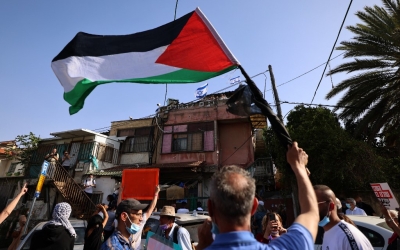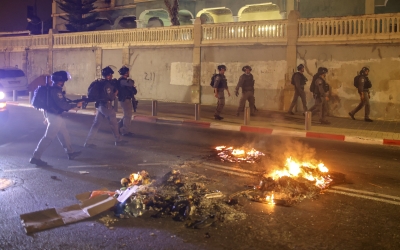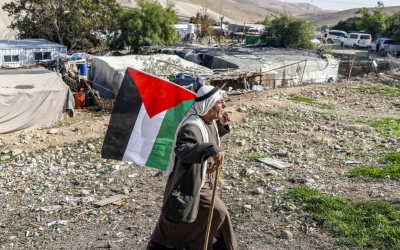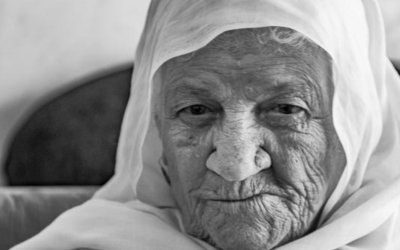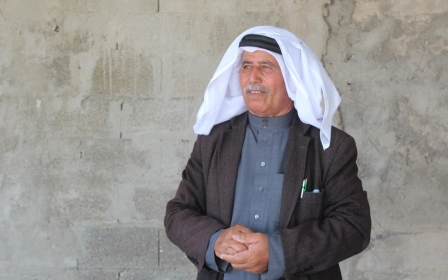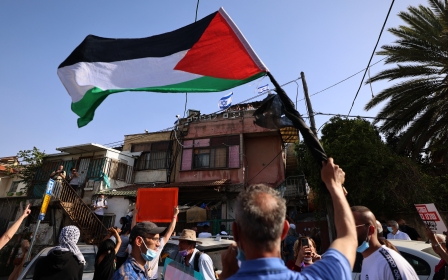Not just Sheikh Jarrah: Palestinians elsewhere are facing forced eviction

The situation in and around Jerusalem’s Old City has spiralled in recent weeks, as crackdowns by Israeli security forces on Palestinian demonstrators protesting forced evictions have grown increasingly brutal.
On Monday morning, Israeli forces once again raided al-Aqsa Mosque, firing rubber-coated steel bullets and tear gas into the complex, injuring hundreds of Palestinians.
The escalating violence is taking place against the backdrop of the planned forced eviction of 40 Palestinians from the Sheikh Jarrah neighbourhood of occupied East Jerusalem.
Since the start of last year, Israeli courts have ordered the forced eviction of 13 Palestinian families in the neighbourhood, with a lower court ruling in early 2021 in favour of Israeli settlers' decades-old claim to the plots of land.
A Supreme Court hearing on a Palestinian appeal had been set for Monday, but the Israeli justice ministry delayed the court hearing amid heightened tensions in recent weeks.
Since Israel occupied East Jerusalem in the 1967 war, Israeli settler organisations have claimed ownership of land in Sheikh Jarrah and have filed multiple successful lawsuits to evict Palestinians from the neighbourhood.
Four of the area’s 38 families are facing imminent eviction, while three are expected to be removed on 1 August.
The rest are in different stages of court cases, going head-to-head with powerful Israeli settler groups in Israeli courts.
While attention has been turned to Sheikh Jarrah recently, many Palestinian families - whether inside Israel, East Jerusalem and the occupied West Bank - are facing the imminent threat of forced eviction too, pointing to the longstanding pattern of forcible displacement and expropriation of Palestinians by Israel.
Here are several areas where Palestinians have been fighting to stay put.
Silwan
Like Sheikh Jarrah, Israeli settlers have made similar claims to owning Palestinian lands that lie close to the Old City of Jerusalem.
Israel has a settlement strategy called the "Holy Basin", envisioning settler housing units and a string of parks themed after biblical places and figures around the Old City of Jerusalem. The plan demands the removal of Palestinian residents from the neighbourhood of Silwan.
In November, an Israeli court ratified the eviction of 87 Palestinians from the Batan al-Hawa area in Silwan, south of al-Aqsa Mosque, in favour of Israeli settler group Ateret Cohanim.
This group, which aims to expand the presence of settlers inside Palestinian-majority neighbourhoods of East Jerusalem around and inside the Old City, had sued the residents of Batan al-Hawa, claiming that the land was owned by Yemeni Jews during the Ottoman period until 1938, when British Mandate authorities moved them due to political tensions.
Residents of Wadi al-Rababa, another area of Silwan that is home to about 800 Palestinian Jerusalemites, have also long been at war with Israeli bulldozers. Residents told Middle East Eye in January that harassment and attempted demolitions by Israeli authorities increased during the Covid-19 pandemic.
Israeli settler advances in Silwan began in 2004, when two settlement outposts were established. By 2014, the number of outposts stood at six - ranging from single apartments to entire buildings.
In November, Israeli authorities announced an excavation plan for the construction of a cable car running over Silwan. The controversial project would dramatically alter the landscape of the historic Old City and expand the Israeli presence in the area, while facilitating tourist access to the Western Wall at the expense of Palestinian shopkeepers in the Old City.
Since 1995, the Israel Antiquities Authority has been excavating sites in Silwan with the support of the settler foundation Ir David, officially in order to create a new tourist attraction and find evidence of the existence of the three-millennia-old "City of David".
The completion of the "City of David" project, including a Roman-style "avenue" built over streets that have been home to generations of Palestinians, would cement the position of the 450 illegal settlers currently living in Silwan and marginalise the 10,000 Palestinian residents of the neighbourhood.
Jaffa
Elsewhere, in Jaffa, in the coastal area south of Tel Aviv, Middle East Eye reported in April that Amidar, an Israeli state-owned housing company, is planning to expel Palestinian residents from their properties and sell some to Eliyahu Mali, the head of a militant synagogue in Jaffa who is seeking to take over Palestinian properties in the area and turn them into a synagogue.
Dozens of Palestinian citizens of Israel, who make up 20 percent of Israel’s population, were attacked that same month by Israeli police and followers of Mali.
Mali is the head of "Settling in the Hearts", an Israeli settlement expansion project that pushes to establish outposts in the middle of Palestinian-majority towns and neighbourhoods in occupied East Jerusalem, the West Bank, and inside Israel, such as al-Ajami.
Mahmoud Abed, a journalist and activist from Jaffa, told MEE in April that a “quiet transfer” of Palestinian families was being carried out by Israeli authorities in the area, leading Palestinians to feel “a lack of personal security and living in dignity”.
“Seventy percent of Palestinian residents of Jaffa live in properties taken over by Israel in 1948 through state-owned companies, such as Amidar. These companies own a third of the property while residents own two thirds,” Abed said.
In recent years, Israel has put properties in Jaffa up for auction, and asked Palestinian residents to bid against wealthy Israeli investors for the one-third share acquired by Israeli state-owned companies.
“No one could afford to collect one and a half million dollars in 60 days to pay back the companies. Almost 40 Palestinian families have left Jaffa because they could not buy or rent a house in the area,” Abed told MEE.
Umm al-Fahm
Umm al-Fahm - a town in the Wadi Ara region near Haifa in northern Israel, where protesters recently demonstrated against Israeli police violence and inaction - has also seen attempted evictions and demolitions.
Palestinian citizens of Israel have long complained that their towns and villages have been underserved by Israeli authorities, while construction permits to accommodate growing communities are difficult to obtain.
The Eghbarieh family, for example, has been locked in disputes with Israeli authorities for more than a decade over the demolition of their home, according to Arab48. The family recently appealed their eviction.
Last August, Israeli bulldozers demolished a half-constructed building for allegedly lacking building permits, according to Palestinian news website Bldtna, which reported that several businesses and houses in the Wadi Ara area had recently been handed demolition and eviction notices for not having a building permit.
Many Palestinians have had to demolish their own homes and businesses themselves, given the choice of doing it themselves or having Israeli authorities charge them for demolition.
Khan al-Ahmar
Before Sheikh Jarrah in 2021, the fate of Khan al-Ahmar had grabbed the attention of the world in 2018.
The village lies in the West Bank between East Jerusalem and the illegal Israeli settlements of Maale Adumim and Kfar Adumim.
In September 2018, Israel's Supreme Court approved the demolition of Khan al-Ahmar despite calls from European countries, human right organisations and activists for Israel to halt the process.
Plans to demolish Khan al-Ahmar are part of the so-called E1 plan, which involves building hundreds of units to link Kfar Adumim and Maale Adumim with East Jerusalem in the Israeli-controlled Area C of the West Bank.
If fully implemented, the E1 plan would effectively split the West Bank in half, cut off East Jerusalem from the West Bank and force Palestinians to make even lengthier detours to travel from one place to another, while illegal settlements would be able to expand.
Under international pressure, Israel put its plans to demolish Khan al-Ahmar on hold in 2018 - but in March, Israeli newspaper Yedioth Ahronoth revealed that officials were once again planning to remove Palestinians from the village.
The residents of Khan al-Ahmar are from the Jahalin tribe, a Bedouin group that was expelled from the Naqab desert - also referred to as the Negev - during the 1948 Arab-Israeli war. The Jahalin then settled on the eastern slopes of Jerusalem.
The Khan al-Ahmar community comprises some 35 families, whose makeshift homes and schools, mostly made of corrugated metal and wood, have been demolished by the Israeli army several times in recent years.
Legislating settlements
Since the annexation of East Jerusalem in 1967, Israel has used two key laws to evict Palestinians from their homes.
The Absentees Property Law, from 1950, classes Palestinians who were expelled from or who left the country after November 1947 as “absentees”, and placed their properties under the control of the Israeli state.
The 1970 Law and Administration Ordinance, meanwhile, allows for the transfer of property lost in East Jerusalem in 1948 only to Jews.
Palestinians cannot claim property they owned prior to 1948.
“Israel’s policy of settling its civilians in occupied Palestinian territory and displacing the local population contravenes fundamental rules of international humanitarian law,” Amnesty International has noted, citing the Hague Regulations and the Fourth Geneva Convention.
The NGO adds that “key acts required to establish settlements”, including unjustified “extensive destruction and appropriation of property” and “transfer... by the Occupying Power of parts of its own civilian population into the territory it occupies, or the deportation or transfer of all or parts of the population of the occupied territory within or outside this territory”, constitute war crimes under the Rome Statute of the International Criminal Court.
Amnesty has also criticised what it calls Israel’s “discriminatory urban planning and zoning system”.
The West Bank, meanwhile, has been divided into Areas A, B and C since the 1993 Oslo Accords, with major Palestinian population centres in Areas A and B. Area C, which represent 60 percent of the West Bank, is under full Israeli military control, with smaller Palestinian communities in that area regularly threatened with house demolitions while nearby Israeli settlements flourish.
“Within Area C, where most settlement construction is based, Israel has allocated 70 percent of the land to settlements and only 1 percent to Palestinians,” according to Amnesty, while in East Jerusalem, “Israel has expropriated 35 percent of the city for the construction of settlements, while restricting Palestinians to construct on only 13 percent of the land.”
As the fight for Sheikh Jarrah continues in courts and in the streets, the fate of other Palestinian communities show that the issue neither begins nor ends with this Jerusalem neighbourhood.
This article is available in French on Middle East Eye French edition.
Middle East Eye delivers independent and unrivalled coverage and analysis of the Middle East, North Africa and beyond. To learn more about republishing this content and the associated fees, please fill out this form. More about MEE can be found here.


